Wooden pilings have been a welcome sanctuary for a variety of wildlife, but it will end.
This is the first of two postings, the first being on perching, the second being on nesting. In both cases they are restricted to things that happen on wooden pilings.
The first wooden pilings on this lake were installed maybe 130 years ago. The last wooden pilings on this lake were installed only a few years ago and may last another 40 years. In the under two centuries that we will have had them, some of the wildlife has been quick to adapt to the advantages of something placed in the waters of the lake.
Pilings are used for securing docks and dolphins. Although the pilings, themselves, are not vanishing, they are now metal, not wooden. (Dolphins, are the many moored channel markers in the lake. They are not buoys for they are not buoyant.)
I start this posting about wooden pilings with a picture of the top of a metal piling. This piling is impervious to nest cavities and its has a conical top to prevents birds from perching on it. Well, I once saw a kingfisher land on a metal piling but it quickly left and I haven’t seen it return. Metal pilings have the advantage of longevity for humans, but are inhospitable to animals. From here on, all pictures were taken on wooden pilings, although, as in the next picture, they may have been framed to show only the bird’s head.
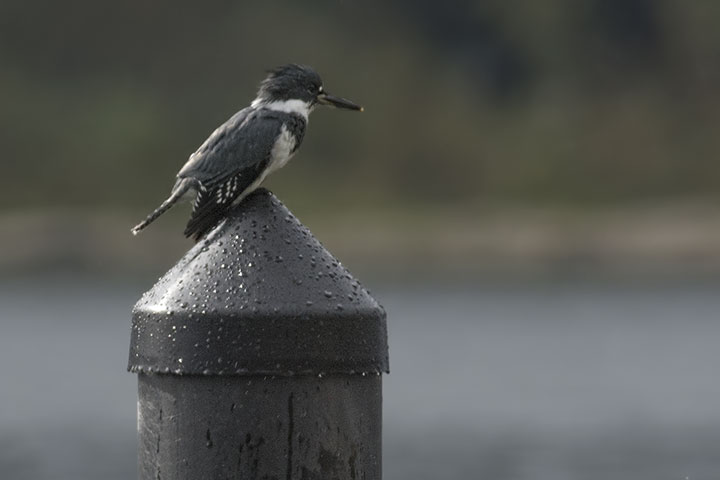
This is a Bald Eagle (probably in its 3rd or 4th year) and this eagle or its juvenile is a moderately common visitor to wooden pilings. Its not quite white head is obvious against a dark background of black distant mountains just at sunrise. Then one spots the uneven pupils. Called anisocoria, the pupils react independently to the light from the lefthand side falling on them. Human eyes are normally aways the same. There is another less obvious feature: the eagle is looking right at the lakeside (where I am). It took a while to recognize this as the normal, but birds on pilings almost always face the shore. That is, after all, from where ground-based predators would come.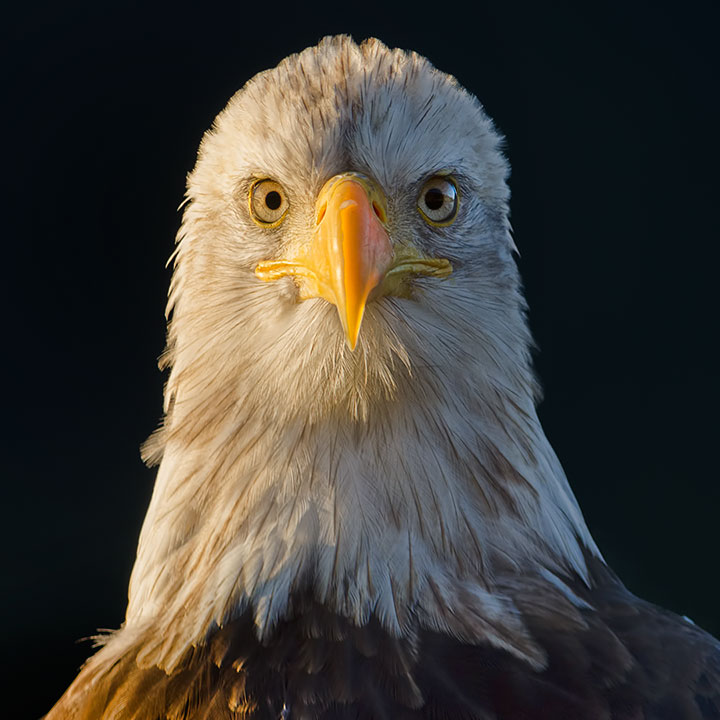
A nearly constant companion of wooden pilings in the late summer or early fall is a gull or two. Three locally common gull species are: ring-billed, California, and herring. This is a Ring-billed Gull ousting a Herring Gull from it perch on a wooden piling. This is a fairly common game for gulls. Photo by Dorothy Fraser.
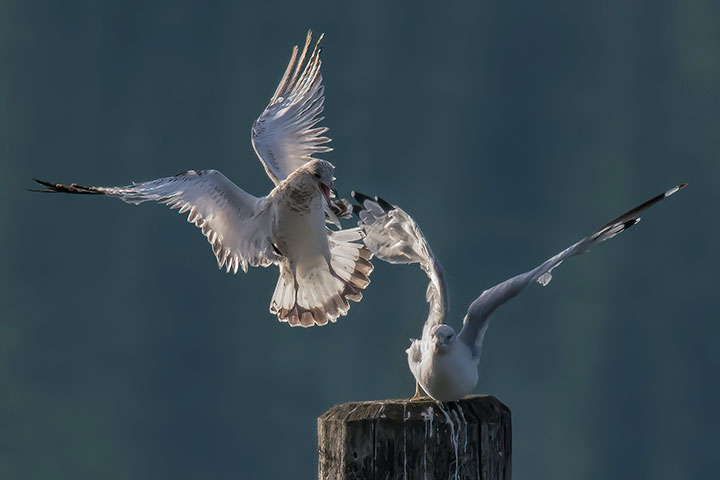
Less common, but more striking gull is a Bonaparte’s Gull.

A fairly common visitor is the Great Blue Heron. It eats fish and hunts them from a piling. It also will hunt from a dock, or the adjacent land.
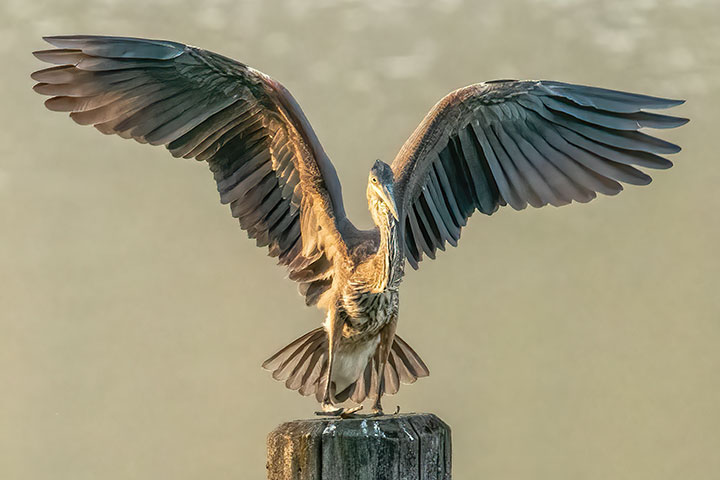
A staple of the summer months is the Osprey bringing a fish for its family. Although the osprey family also nests on wooden pilings, here the male is first stopping by to perch on a piling to eat the tasty brains before bringing the rest of the fish to his chicks.
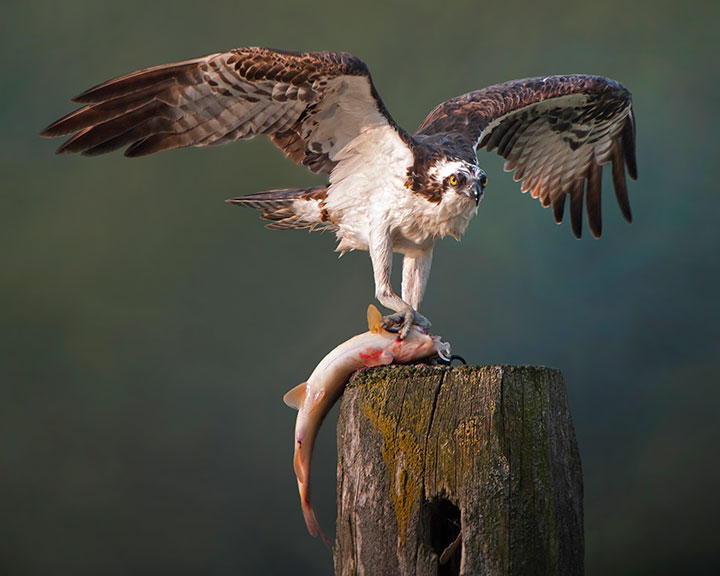
The Belted Kingfisher hunts from the top of wooden pilings, but its technique is to move on quickly if it spots nothing. On this occasion, two of them are mating.
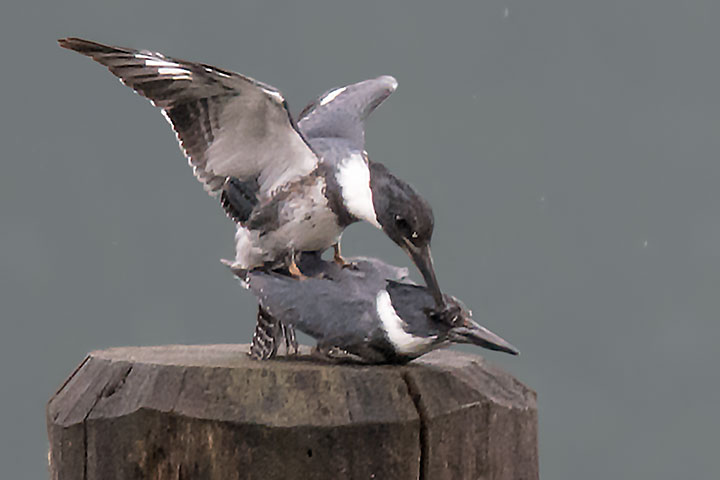
One of the rarest wooden piling perchers I have seen is the Northern Harrier. This migrant visits when it heads north in the spring to breed and south in the fall to winter.
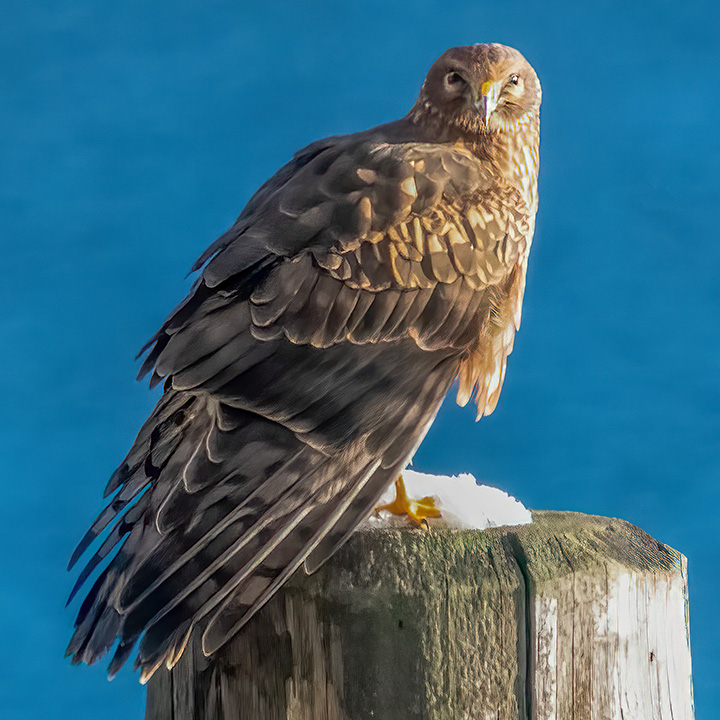
An equally rare percher is this Turkey Vulture. It and a colleague were feeding on the carcass of a skunk along the beach but chose to perch on a piling and a dock as they waited out some competition from a raven.
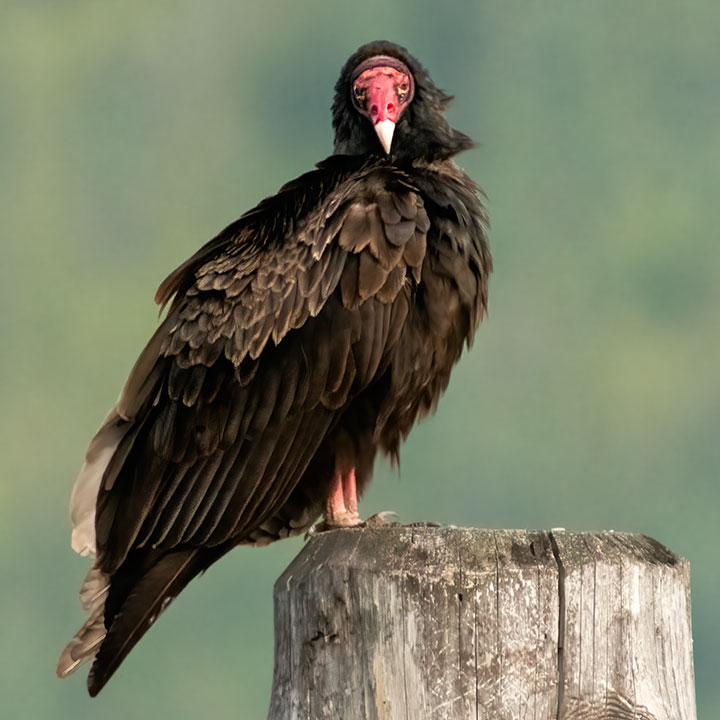
For a month or so during the breeding season there are rather odd perchers on the top of wooden pilings: female mallard ducks. Also seen are female mergansers and female goldeneyes. What is going on? My suspicion is that they are avoiding mating, but the explanation is unknown. And what did they do before wooden pilings were employed on the lake?
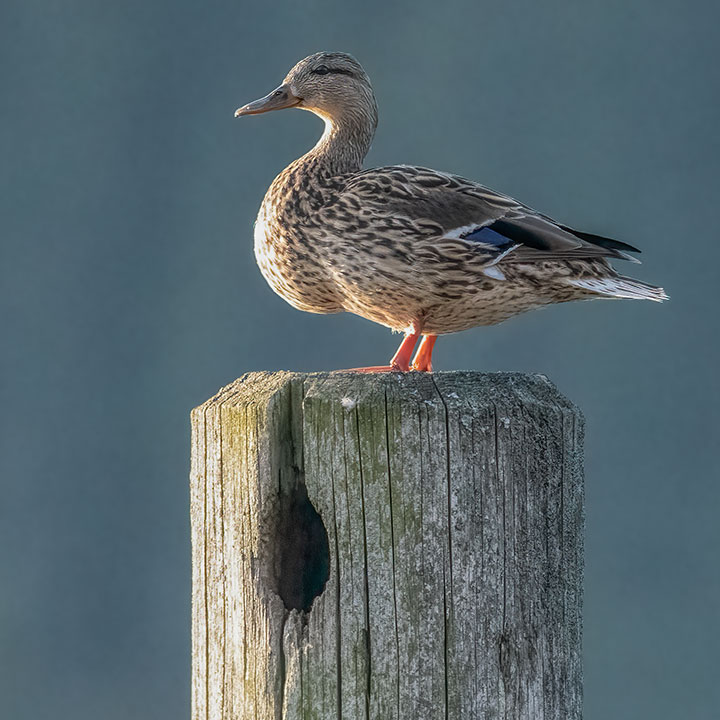
These activities are doomed to end in a few decades when all the wood pilings will have deteriorated. Some of these situations looked like behaviour modification brought on by the presence of the wooden pilings, other were merely convenience. What will happen?
In the second posting in this story, nests in wooden pilings will be treated.

Easter Hello…Alistair…you have `plied on many interesting tidbits and pics here…the various piling`perchers and comments…like the fact that most birds will be facing the shore!..the gull game…avoiding mating…and yet the for the Kingfishers the mating opportunity.
Perfect various bird pics…and even the different piles are interesting to note..and the light…and your second posting hook..I will be watching for!
Allan / Woodbury Village
Never one to miss an opportunity for work-around, I’d suggest getting together with like-minded lakeside neighbours to install wooden pilings specifically for birds to perch on – and lichens to grow on.
As usual absolutely fantastic photographs- Happy Easter to you all